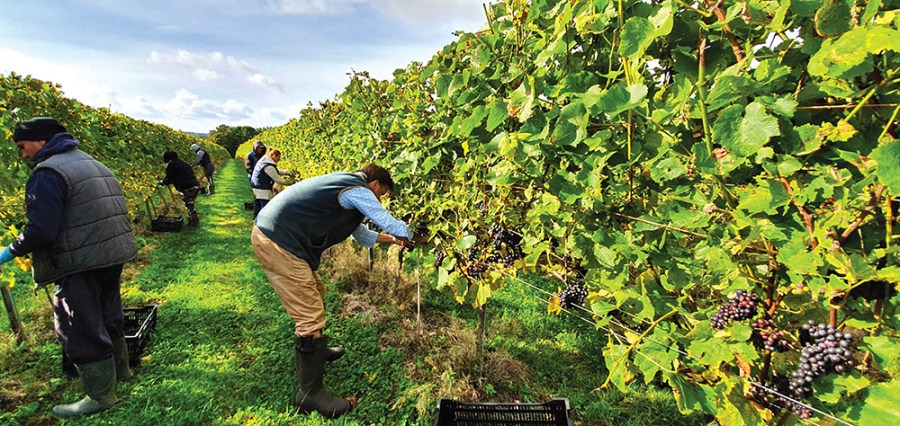Unsurprisingly, the weather has been a dominant talking point this year, resulting in mixed fortunes for growers.
Generally, floral initiation was good last summer, so this year’s bunch numbers are similar to normal, but fruit set has been variable, especially where cool, wet conditions occurred during flowering.
In some cases, yields may be 30% down on average, although much depends on the conditions that individual sites experienced during the crucial flowering period. Dry, sunny weather allowed flowering to finish in just a few days, while for some, it went on for a couple of weeks due to poor weather.
The increased incidence of millerandage (‘hen and chick’) this season is typical of poor fruit set resulting from extended flowering periods, but it can also be a symptom of boron deficiency. Take note of where hen and chick has been found, and where necessary, apply boron post-harvest and again from bud burst next year to rectify any deficiencies before flowering commences.
Watch for Botrytis
Ironically, where fruit set is lower and bunches are more open, it may help reduce Botrytis pressure in the run-up to harvest, although this could be countered by any increased risk from latent infection that occurred during a protracted flowering period. Latent infection remains unseen within bunches until conditions favour a disease outbreak – notably when sugar levels rise and grape skins thin.
While Botrytis pressure is not unusually high early in September, it is a constant threat later into the season, especially in warm, wet, humid conditions.
Disease often flares up on damaged grapes, including those where flower caps stuck to embryonic berries earlier in the season, creating a fracture point as grapes mature – something we have seen this year.
Some cracking has also been observed, possibly caused by the rapid growth that occurred when the weather warmed up in late July and August. Calcium is pivotal to skin strength, and while it is usually readily available in the soil, plant uptake and utilisation of the large molecule can be slow, therefore vines sometimes struggle to meet rapid increases in demand. This highlights the value of regular nutrient testing to identify potential issues early, and to apply foliar calcium at key times to boost levels when required.
With strict harvest intervals on conventional botryticides, it can be tricky protecting crops right up to harvest, although biological products based on beneficial micro-organisms and enzymes can mitigate this. They are very much a preventative measure though, with populations requiring time to build up, so any such approach should be planned in good time next season.
Battling mildew
Disease-wise, powdery mildew has been problematic in some parts of the south, but the biggest challenge for many in such a wet season has been downy mildew control, first appearing towards the end of May and requiring a concerted focus to protect mature leaves right up to harvest.
Given limited chemistry, downy mildew is virtually impossible to eradicate once it gets into a crop in seasons like this, so the focus is on managing the risk of disease spreading.
Interestingly, more infection pressure has been noticed on the laterals of primary shoots this season, particularly where growers stayed with a fixed two-week spray programme. In such situations, any growth emerging soon after treatment, may have been left exposed for the best part of two weeks before being treated. It highlights the need for flexible spray timings based on forecast conditions and disease risk, and perhaps in future high-risk situations, consider an intermediate treatment (e.g. sulphur + copper) mid-way between conventional treatments to maximise protection.
Growers also need to be aware of any potential disease carryover into next season. Where possible, consider applying a specific downy mildew fungicide alongside the post-harvest copper foliar feed, to minimise carryover risk on fallen leaves and other material.
Enhancing soil biology could also help manage overwintering oospores, as many species of fungi act as biocontrol agents, consuming or destroying disease spores in the soil.
As the UK area of vines continues to increase, so we may find greater risk of disease inoculum spreading between sites, especially wind-blown spores in areas where vine growing is more concentrated, and growers employ different treatment regimes. More open communication between groups of local growers could help everyone identify and act on risks in a more timely manner, whether those risks are diseases, pests, or other threats, such as frost.
For more like this, sign up for the FREE Vineyard newsletter here and receive all the latest viticulture news, reviews and insight




